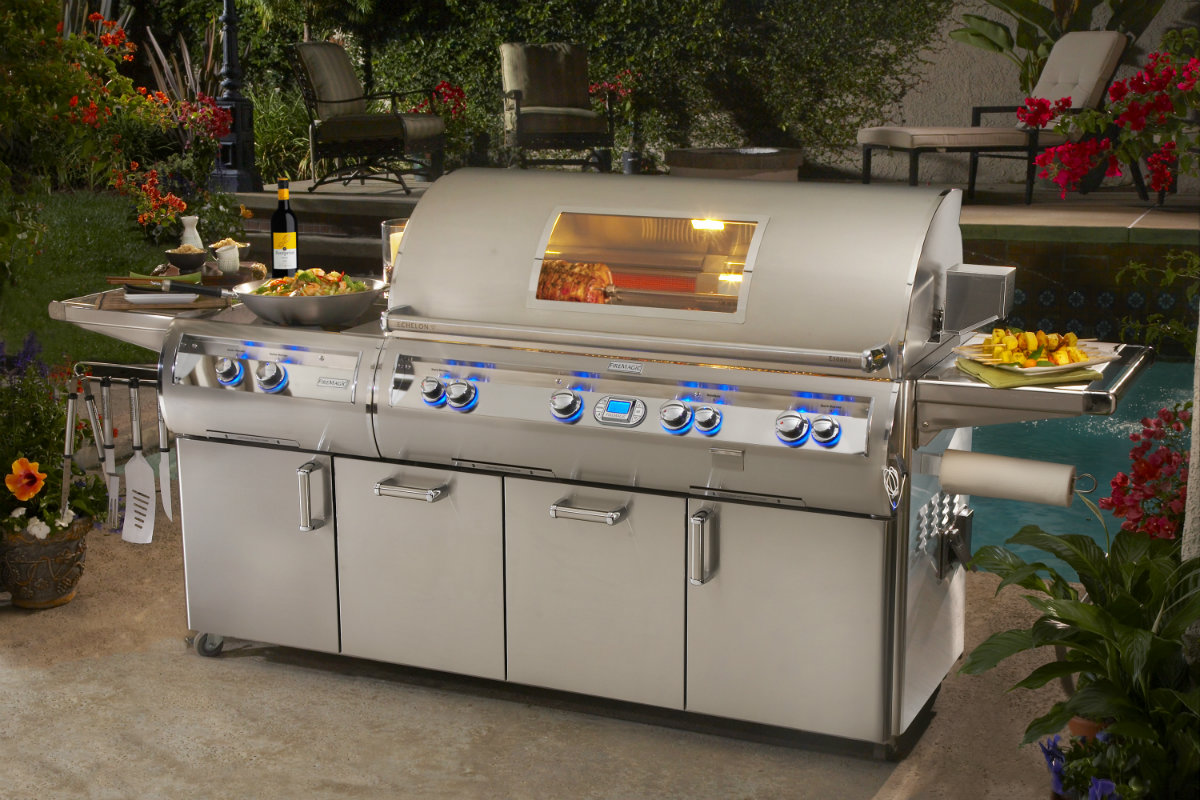There is one thing better than smelling a chop or rack of ribs sizzling on the grill: Seeing it sizzle, as well.
Chefs no longer need to pace nervously in front of their barbecue grills wondering if the food under the steel hood is cooking or burning. Now grill enthusiasts can cook with confidence, thanks to glass embedded in the lid that allows them to peer as they sear.
The advantage is clear: You won’t have to repeatedly open the hood to check on food, losing heat and flavor with each peek. It also minimizes flare-ups by giving you a view into the grill to ensure grease drippings aren’t fueling fires.
This isn’t exactly a new innovation, but one that has been greatly improved since its problematic early days.
Manufacturers introduced the feature decades ago but quickly realized it was better in theory than in practice. The windows were small and made of tempered glass, which had a tendency to crack and shatter, either due to impact or thermal shock. They became clouded by smoke and grime. And illumination only came from the fire itself, rendering windows virtually useless in even the best conditions. In short, the panes were a pain and they disappeared from the market.
But grills with views are making a comeback, thanks to advancements in glass technology and the advent of interior lighting.
I’ll confess that when we reintroduced the concept, it wasn’t immediately embraced. Retailers resisted, saying, “We’ve been through glass before!” Distributors needed convincing, as well. So we gave several of our key distributors free grills so they could see for themselves how the glass-fronted units performed. Fortunately, they were impressed.
Even I was skeptical at first. That’s why the first in-field application was in my own backyard. I wasn’t going to put it on the market until I was convinced that the new glass material held its end of the bargain.
I was pleased to discover that problems associated with those early-era in-hood panes remain firmly in the past.
Today’s windows are made of glass-ceramic, a material that’s nonporous and transparent like glass, but tough like ceramic, able to withstand extreme heat up to 1400 degrees. It doesn’t expand or contract, making thermal shock a nonissue. (This is the same material used in stoves and fireplaces.) As a result, manufacturers can make grill windows much larger than the peepholes of the past.
Further, smoke and splatter is no longer a concern. The rounded-hood configuration creates something of an air wash effect. Basically, smoke rolls up and over the window and out of the back of the unit. And cleaning is a breeze. I barbecue two to three times a week, every week, and only need to wipe the window with a standard cleaner every three months.
There’s also ample lighting produced by halogen bulbs angled to illuminate the entire cooking surface.
Glass hoods, however, do not come inexpensively. For dealers, this is an upcharge opportunity. Consumers can expect to pay upwards of $500 for the feature. For many, the added cost is negligible when factored into the overall cost of an outdoor kitchen. That’s why more than 30% of our top-end grills are ordered with the optional window.
For retailers, the glass lids offer an opportunity to showcase something different. Unlike other grills, you should display these units with the lid down. Be sure to plug it in so customers can switch on the internal light.


